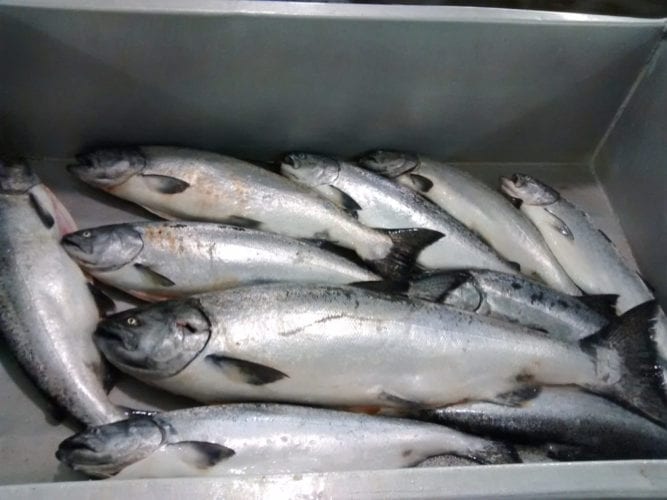Commercial salmon trollers in Southeast Alaska fell short of their limit of king salmon for the winter season that closed in April.
The preliminary harvest total is just over 43,000 kings. Most of those, around 40,000, are fish managed under the Pacific Salmon Treaty between the U.S. and Canada. Those fish mostly come from hatcheries in Canada and the Pacific coast of the U.S. The rest come from hatcheries in Southeast Alaska. The last two years the winter season has ended early as the fleet has surpassed a 45,000 fish guideline harvest level, or GHL, for Treaty kings.
“So a down year,” said Grant Hagerman, the Alaska Department of Fish and Game’s troll management biologist for Southeast. “And I think for most of this winter if you talked to trollers that fished, they’d tell you that it was down. What was interesting you know basically 3-4 weeks ago, we’d only taken half of that guideline harvest level. So the last, basically the last three weeks of the fishery these trollers caught 22,000 kings or half of the GHL. Basically for the month of April they took half of the GHL.”
Last year the season ended in record time, closing March 8. This year fishing remained open for the full season, through the end of April. Both catch rates and effort picked up in the final weeks of the season. The bulk of the catch typically comes from waters around Sitka. Hagerman (HAY-gur-man) said the distribution of the catch was a little different this year.
“There were a lot of permits here fishing and Sitka did take a fair amount of those fish but there was very good fishing in other parts of the region,” Hagerman said. “You know south Chatham Strait in district 9 and in south Sumner Strait in district 5, which was also kindof interesting. That was a fair amount of fish for that area. You’d have to go back a number of years before you saw effort and harvest in that particular area as high as it was this spring.”
The price for troll caught kings was record setting. Fish fetched $8.50 a pound at the docks to start the season, topped 10 dollars a pound during the winter and ended up averaging nine dollars and 83 cents a pound, the highest on record.
The spring troll fishery targeting kings from Alaska hatcheries started up in May and runs through June.
Areas and fishing time are decreased this spring because of conservation concerns with non-hatchery kings. Hagerman expects those restrictions will impact the fleet’s catch for the next two months.
“Areas that may have been open seven days a week are half of that and then delayed openings in some of these areas,” he explained. “It’s gonna have an impact on I think what our overall harvest is going to be for spring. So even in the face roughly 100,000 fish reduction in our annual quota for troll, we could be looking at carrying some additional fish into summer because of our reduced harvest in spring and as I mentioned our Treaty harvest in winter at 40,000 fish, versus a GHL of 45,000. So we could be looking at carrying those fish over as well. So it adds a little bit to summer.”
Catch and effort in the spring season has been slow in the first weeks. The fleet has over 154,000 Treaty kings to catch in the combined winter, spring and summer seasons.










